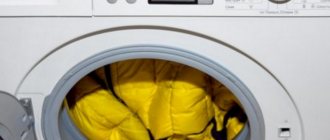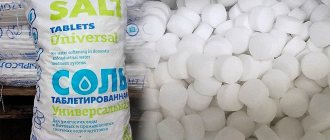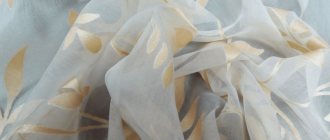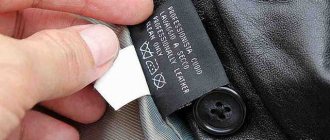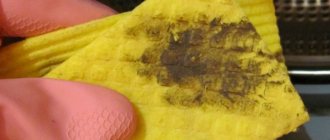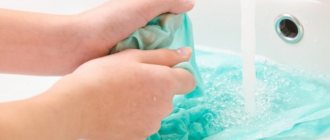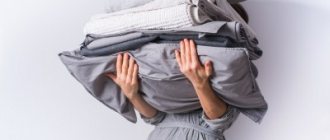To successfully wash in a washing machine, you should follow the recommendations so as not to spoil the product and maintain a clean appearance for a long time. Powder and liquid detergents, special bleaches and soaking with bleaching agents will give whiteness. Select the most suitable programs to maintain tissue integrity. Wash white fabrics separately from all other fabrics.
Anything dirty on white clothes is immediately noticeable. Automatic washing with special detergent helps your clothes look shiny. Local stain removers can treat local soil. The shade of gray can be eliminated at home with home remedies. Following the washing program will help maintain the integrity and attractiveness of the fabric.
Preparing laundry for washing
Before washing, sort your clothes by color. Always wash whites separately from blacks and colors to avoid fading.
Remove all items from pockets, remove straps, and close or unfasten metal hardware to avoid rust stains. Socks, pillowcases, duvet covers, shorts, T-shirts are turned inside out. Fasten and unfasten the buttons.
Do not overload the washer-dryer; follow the manufacturer's load ratings.
Is it possible to wash white items with colored and black items together?
The rule on how to wash white items so that they remain white is to avoid washing them together with colored or black items. Even with minimal shedding of such products, dye molecules will penetrate into the structure of the fabric, which will affect the color
A special situation arises if it is necessary to wash white items with a black pattern or colored inserts. To maintain the vibrancy of all shades, it is recommended to use a gentle wash with low temperature and a mild detergent.
Sorting laundry
Before washing white laundry, sort the laundry by degree of soiling and type of fabric. Place lightly soiled natural fabrics on one side and items that are difficult to dry on the other. Synthetic materials, wool and silk are also sorted.
When washing white laundry, sort it first
Load lightly soiled items into the machine and wash them in the appropriate program. Heavily soiled clothing should be pre-washed and contaminated areas should be treated on site.
Tips for caring for white sweaters
Usually, in order to bleach clothes, they use the old method - boiling the product with whiteness. But in the case of knitted items, this method will only ruin them. Like wool, artificial acrylic becomes rusty when exposed to bleach. Therefore, when bleaching a white sweater on your own, you should adhere to the following tips:
- Products should be used without chlorine or use folk remedies;
- The water should be either room temperature or slightly cool, but there should not be large differences during washing and rinsing;
- The container should not contain chrome, otherwise the item will acquire a grayish tint. It should be ceramic, glass, enamel or plastic dishes;
- Before using chemical bleach, you should first test on a small area of the sweater.
You should know! Only items that have already been washed need to be bleached. Otherwise, the dirt on the sweater will take on an unsightly shade.
If chemical bleaches cannot be used for some reason, you can always use folk remedies recipes. Moreover, to prepare them, it is enough to buy inexpensive pharmacy or household products. The bill for purchasing these goods will not affect your wallet in any way.
Soak
To remove stains and achieve maximum wash results, use bleach before washing in the washing machine:
- two tablespoons of baking soda whitens natural fabrics;
- two liters of water with five tablespoons of peroxide removes gray synthetic fabric;
- two tablespoons of ammonia per liter of water to bleach silk;
- one tablespoon of dry mustard per liter of water removes faded streaks on silk and other delicate fabrics;
- One cup of vinegar solution (9%) per two liters of water whitens lace fabrics and tulle;
- an equal amount of salt and soda will whiten guipure and satin fabrics;
- washing in cold water and washing with laundry soap will remove blood stains;
- Eliminate yellowness with 20 g of manganese per liter of water (things should be soaked in cling film).
- Heavily soiled fabrics should be wetted before washing.
Note: Soak laundry for a maximum of three hours. The more aggressive and softer the material, the shorter the soaking time should be.
How to wash by hand
Hand washing a sweatshirt is not even washing in the full sense, but simply soaking. This method is enough for the contaminants to “move away” from the knitted material:
- Fill the basin with water (temperature - from 30 to 40 °C).
- Add 0.5-1 cap of liquid powder (a full cap when the item is made of a very dense material). If the powder is free-flowing, then 1-1.5 tbsp is enough. l. Add 1 cap of all-purpose conditioner. Stir.
- Dip the sweatshirt into the basin and completely submerge it in water. The jacket with a zipper should be zipped up first.
- Leave for 90 minutes. A very dirty item is soaked for 2 hours, but no longer.
- Transfer the sweatshirt to an empty bowl. Fill it with clean cold water in an amount sufficient to completely immerse the item.
- Rinse, changing the water periodically (when the liquid becomes cloudy).
After 1-2 changes of water, it will be more convenient to transfer the sweatshirt to a large colander and continue rinsing under running water.
Removing stains
Local stains can be removed by applying a spot bleach:
- Use two aspirin tablets moistened with a little water.
- Apply the resulting solution to the contaminated area and leave for several hours.
- Then rinse and machine wash.
Instead of tablets, use salt and ammonia in equal proportions or citric acid diluted in warm water.
There are a variety of stain removal methods available.
Wash handcuffs, sweat stains in armpits, shirt collar with laundry soap and leave for a while. We can get rid of the unpleasant smell of soap by adding a few drops of clear essential oil when rinsing again.
Choice of product
There are different brands of dry and liquid whitening products.
Powders
Selecting a specific washing powder for machine washing clothes with bleaches. The softest and most environmentally friendly products contain plant ingredients. The table below shows several brands of whitening products.
Detergents for washing white fabrics
Table 1. Liquid and dry detergents for washing white laundry.
| Release form | Name | Manufacturer | Cost per package, rub. |
| Loose | BiMax "Mountain Cloud & White Glow" | Russia | 400 |
| AOS "White and snow-white" | Russia | 350 | |
| Persil “For white linen” | Russia | 300 | |
| DENI "Active bleaching oxygen" | Russia | 65 | |
| Biolan "White Flowers" | Russia | 50 | |
| LAVEL | Russia | 50 | |
| Myth "3 in 1" | Russia | 40 | |
| Dry and liquid | Mini Risk | Denmark | 650 |
| Tide “Alpine freshness” | France | 550 | |
| LV concentrated for white laundry | Finland | 450 | |
| Ariel "Mountain Spring" | France | 350 |
Use dissolvable capsules instead of regular products that are available in a separate line. Lotta and Fairy Whitening products have a whitening effect.
Bleaches
Use professional bleaches along with household detergents. They act as stain removers and remove stubborn stains such as grass, paint, sap and dirt.
They are divided into three categories:
- Chlorine-containing
- oxygen-containing
- optic.
Chlorine-containing ones (“Belizna”, Libya, Ac) are only suitable for hand washing thick fabrics made from natural fibers and jeans. Chlorine works even in cold water and, in addition to bleaching, disinfects fabrics. However, frequent use damages the fibers, causing the fabric to become thin and develop holes.
Frequent use of chlorine bleach can damage fabrics.
The mildest bleaching agents are those that contain sodium percarbonate. They are used for automatic and hand washing. A significant drawback is the short shelf life. Examples of bleaches containing oxygen are given in the table.
Table 2. Bleach for automatic washing
| Release form | Product name | Manufacturer | Cost per package, rub. |
| Loose | Sano | Israel | 600 |
| Dr. Beckmann | Germany | 400 | |
| Chirton Oxygen | Russia | 170 | |
| Oxy Crystal | Russia | 70 | |
| Washing Tone | Belarus | 70 | |
| Persol | Russia | 25 | |
| Liquid | Amway | USA | 550 |
| Synergetic | Russia | 170 | |
| Two release forms | Vanish Oxi Action | Russia | 250 |
| Bos Plus | Russia | 120 | |
| Eared nanny | Russia | 120 |
After the first half of the cycle, when the tray is empty, add liquid bleach to the second tray. Powder products can be mixed with dry detergent or added directly to the second chamber II. In the second case, the detergent is poured into compartment I.
Optical products are not sold in pure form for home use. Typically, optical substances, that is, reflective particles, are mixed with dry detergent granules.
For wool and silk, choose special products or use household chemicals: hydrogen peroxide, vinegar, salt.
To maintain the whiteness and durability of clothes, bleach should be added no more than every two or three washes. Chlorine-containing detergents should be used as little as possible.
Algorithm for washing in a washing machine
When washing in a washing machine, you must follow the following algorithm:
- Loading laundry into the drum
- Filling the machine with cleaning agent
- Program selection
- Wash
- Rinsing
- Rotation
For high-quality washing, correctly calculate the amount of detergent
Each step can be controlled manually depending on the type of fabric and the degree of soiling of the laundry.
Washing programs
The washing program depends on the type of fabric. Cotton and linen are washed in the “Cotton” and “Natural Fabrics” programs. For synthetic fabrics, select Delicates, Synthetics, Silk. Washing cotton fabrics with synthetic or silk inserts in a delicate or mixed program.
Temperature
The temperature also depends on the type of fabric. Read labels and tags on clothing before washing. If there is no label, then you should remember the simple rules for washing white laundry at what temperature:
Skirts, dresses, blouses made of cotton and linen, as well as synthetic fabrics, are washed at 40 ° C; Cotton linen, kitchen towels and personal towels are washed at 60 ° C; Children's products made from natural fabrics are washed at 90-95 ° C. Select the washing temperature.
In case of heavy soiling, cotton can be washed at 90°C.
Spin
Set the spin program according to the type of fabric:
- 1200-800 rpm for cotton, linen and denim fabrics;
- 600 revolutions for synthetic fabrics;
- 400 rpm or less for viscose spinning.
It is better not to twist woolen fabrics at all. After draining the bathtub, open the drum, remove clothing, and hand-wring it to remove excess moisture. Wool should be dried horizontally.
Fabric Features
The knitwear we buy in the store is made from different materials. Some items require careful gentle washing; when bleaching others, the use of chemical detergents is allowed.
Important! It is imperative to take into account the composition of the product. This information and how to care for the item are indicated on the product label.
Various components are used to produce knitted fabrics:
- Natural raw materials. These are products made of cotton, linen, wool, silk;
- Artificial fibers. These include viscose and similar compositions, acetate;
- Synthetic materials. These are raw materials such as polyester, lycra, elastane.
A quality item always contains natural ingredients. Synthetic fiber enhances its characteristics. Such clothes wrinkle less, stretch better, and return to their shape quickly. But at the same time, such a thing requires special care.
Ironing
After washing, iron natural fabrics, especially children's clothing and bedding.
Iron clothes
To make ironing easier or avoid ironing, place a few ice cubes in the washing drum. Turn on the dryer. Melted ice will have the same effect as a double boiler.
Starching
Starching is done after washing in the machine; this will help your laundry get dirty much less.
Take a glass of starch and thoroughly dilute it in a liter of water, preferably a little less water. Then pour the mixture into boiling water, there should be about 3 liters of it and wait until everything boils again. Now rinse your white washed clothes in this water and dry them a little. After this, while they remain damp, gently iron them.
That's all! From now on, you know what you can use to wash whites, now they will be bright snow-white and will not get dirty quickly.
Many housewives are annoyed after washing when they see that their colored linen has faded. How to wash correctly, Items made of viscose look very beautiful and bright, but due to improper care they become very fast, Natural fabrics are expensive, but cause certain difficulties when washing. To remove contaminants you will need, Properly washing and drying a down jacket is a whole science, because due to poorly selected

